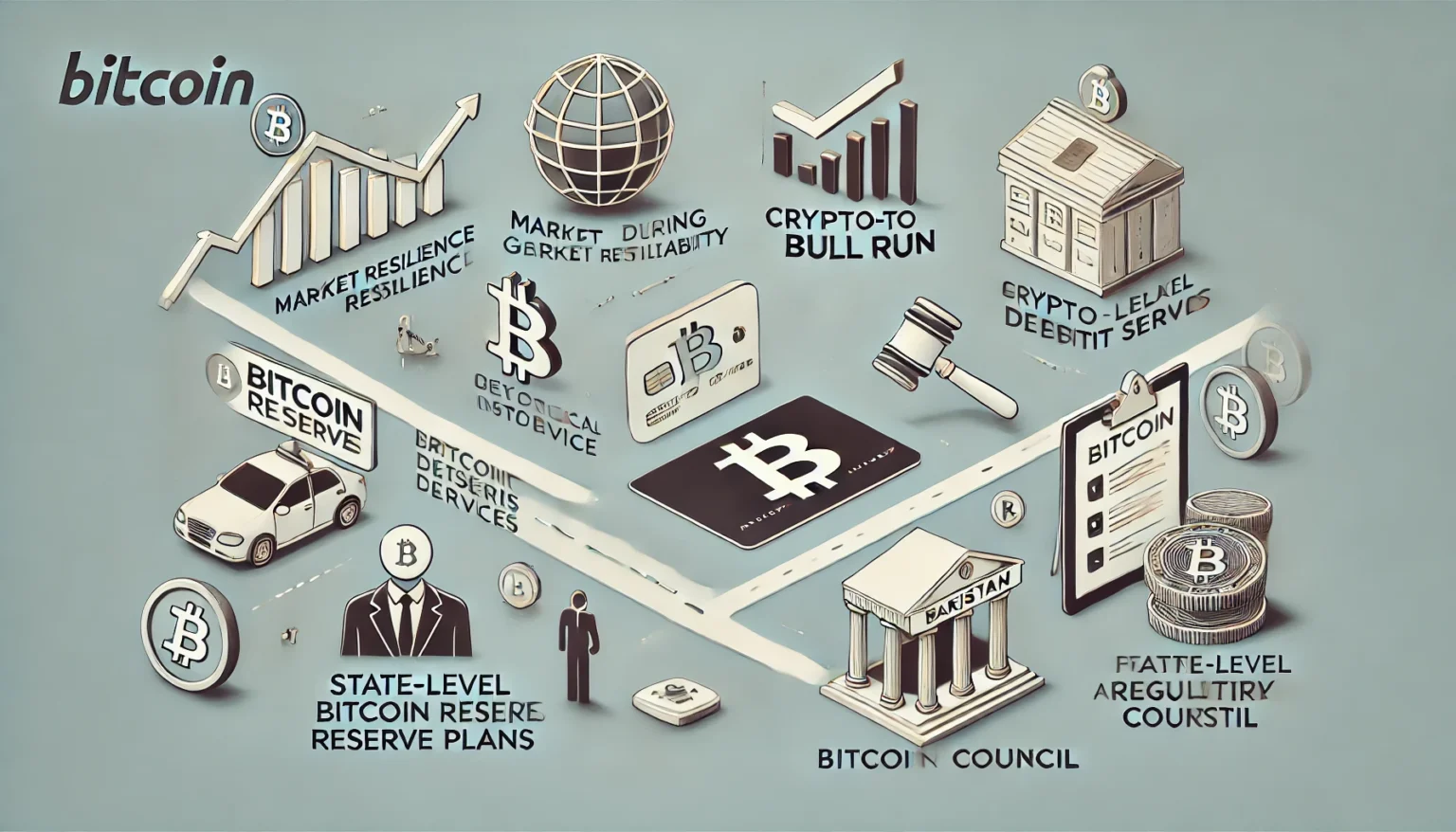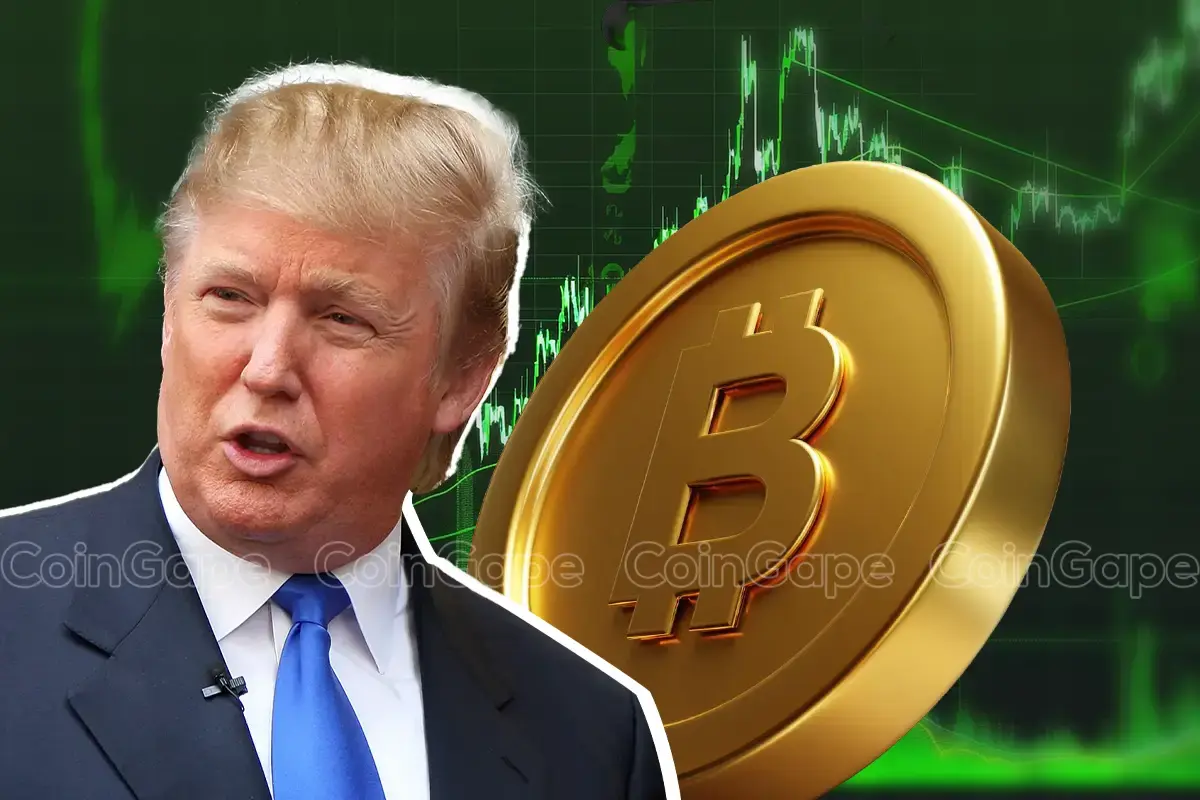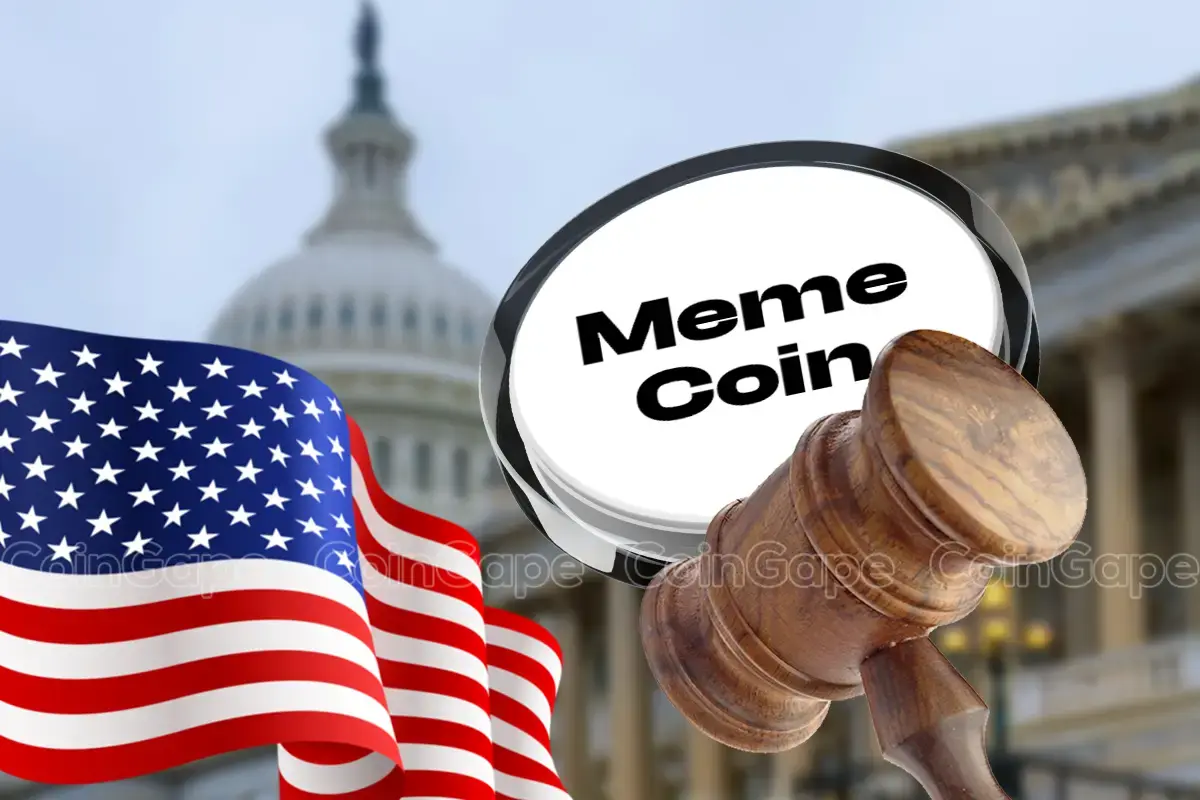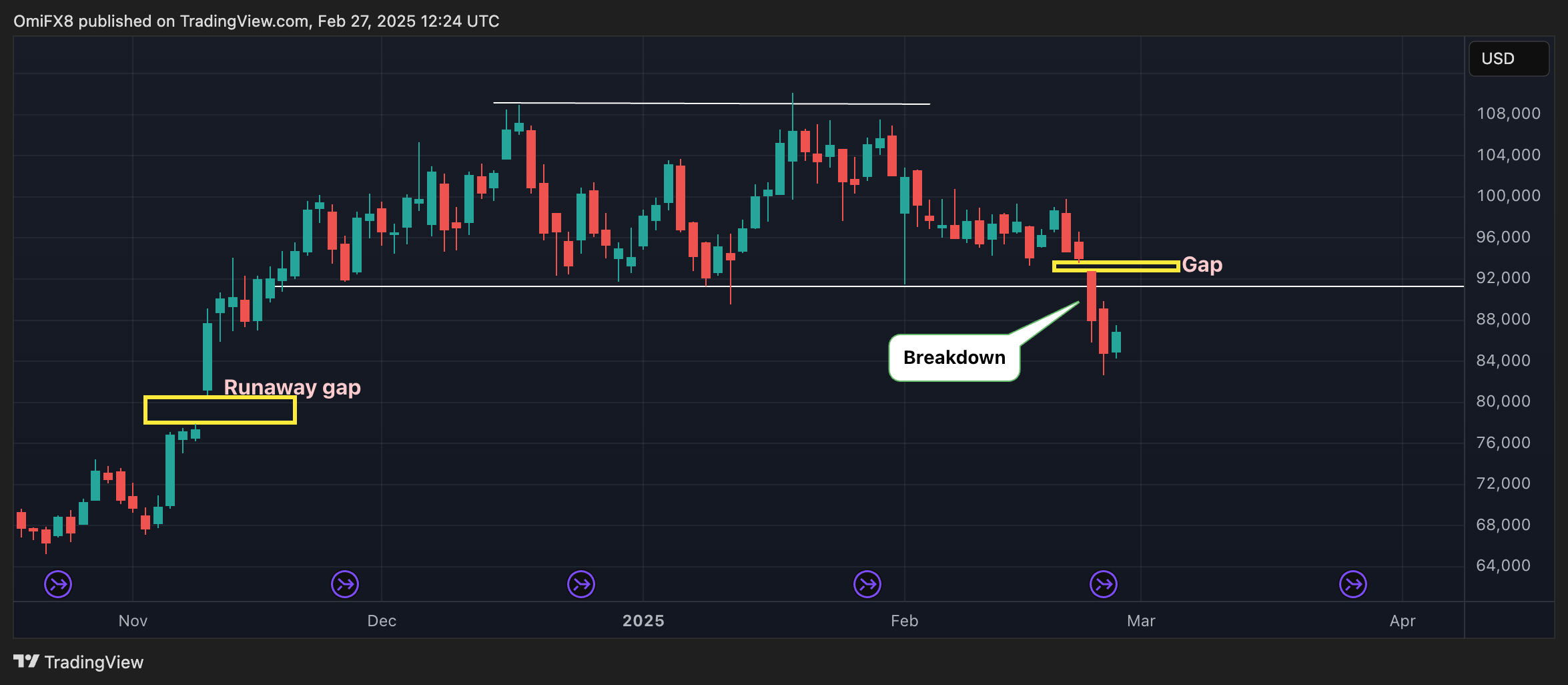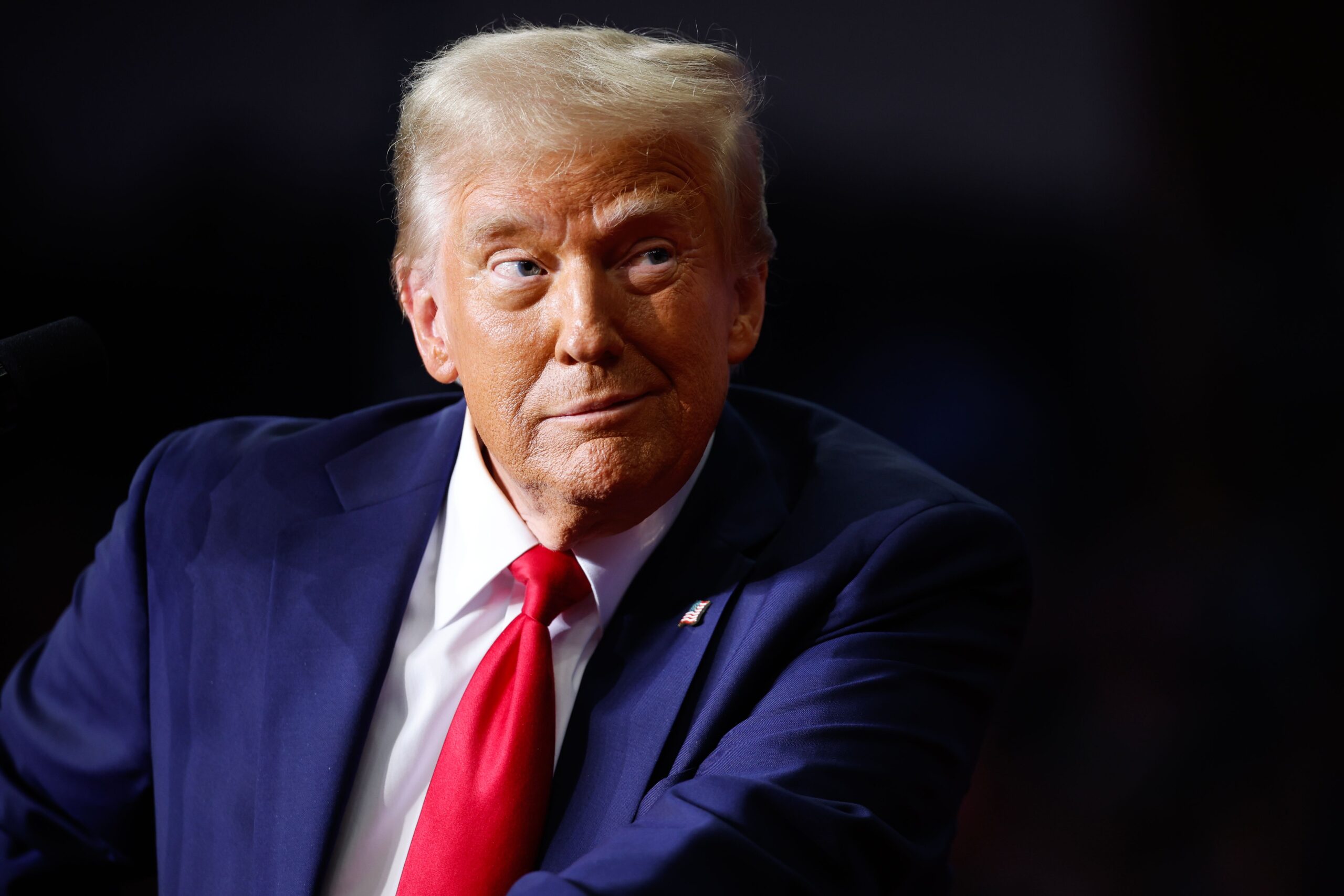The latest developments in the crypto world underscore the sector’s resilience amid global financial uncertainties. From regulatory actions to new market features, the crypto ecosystem continues to evolve rapidly. Institutional demand for Bitcoin remains strong, even as governments propose new legislation targeting memecoins and the integration of Bitcoin into state reserves faces hurdles. Meanwhile, innovation in crypto payments and partnerships, such as the collaboration between Cronos and Crypto.com, highlights the growing use case for digital currencies in everyday transactions. Let’s dive into these key updates:
Crypto Holds Firm as Traditional Markets Struggle with Trump’s Tariff Threat
The cryptocurrency market has shown resilience amid a downturn in traditional finance triggered by Donald Trump’s latest tariff threats. Major stock indices, including the S&P 500 and Dow Jones, suffered losses as investors grew wary of potential economic repercussions. However, Bitcoin and other leading cryptocurrencies remained stable, demonstrating their role as alternative assets during economic uncertainty. This divergence between TradFi and crypto highlights the growing perception of digital assets as a hedge against geopolitical risks and macroeconomic instability.
A key factor behind crypto’s stability is institutional demand, with many investors turning to Bitcoin as a digital store of value. Historically, Bitcoin has performed well in times of financial distress, and its decentralized nature shields it from direct government policies like tariffs. Furthermore, growing adoption in emerging markets and increasing utility in payment systems continue to strengthen crypto’s long-term outlook. Despite concerns over regulatory challenges, the sustained demand for digital assets suggests they are becoming more integrated into the global financial ecosystem.
While Bitcoin’s price action remains relatively steady, altcoins like Ethereum and Solana are also seeing interest from investors seeking diversification. If economic uncertainty persists, crypto markets may continue to decouple from traditional assets, further reinforcing their role as an independent financial system. However, regulatory scrutiny and potential policy shifts remain risks that could impact market sentiment.
Market Impact:
The market impact of this development suggests that digital assets, particularly Bitcoin, are increasingly seen as a safe-haven investment during times of geopolitical and financial uncertainty. As traditional markets react negatively to Trump’s tariff threats, cryptocurrencies are holding steady, potentially attracting institutional investors who seek protection from external macroeconomic pressures. This trend could further solidify Bitcoin’s role as a store of value, separate from traditional assets, especially if geopolitical tensions continue to rise.
CryptoQuant CEO: Bitcoin’s Bull Run Still Has Momentum
CryptoQuant CEO Ki Young Ju remains confident that Bitcoin’s bull market is far from over, citing strong on-chain data as evidence. He highlights that long-term holders continue to accumulate Bitcoin while exchange reserves remain low, indicating that investors are not eager to sell. Historically, bull markets end when a “blow-off top” occurs, marked by excessive retail euphoria and large-scale profit-taking—something Ju believes has not yet happened.
One key metric supporting his argument is Bitcoin’s realized cap, which is approaching all-time highs. This suggests that new capital is entering the market rather than old money exiting. Additionally, institutional adoption continues to grow, with major financial firms integrating Bitcoin into their offerings, further solidifying its position as a legitimate asset class. The approval of spot Bitcoin ETFs has introduced a new wave of demand, which could sustain the bull cycle for longer than previous market cycles.
Despite short-term corrections, Ju sees Bitcoin’s fundamentals as strong, with supply-side dynamics favoring further price appreciation. The reduced availability of BTC on exchanges, coupled with strong holding patterns, indicates that any dips could be buying opportunities rather than signs of a market top. However, investors should remain cautious of external macroeconomic factors that could trigger temporary downturns.
Market Impact:
The market impact of this news suggests that Bitcoin’s bullish trend is likely to persist in the medium to long term. Strong on-chain metrics and low exchange reserves point to continued accumulation, especially by long-term holders and institutional investors. As Bitcoin’s realized cap approaches all-time highs, there may be more upward pressure on its price, which could lead to more institutional interest and stronger demand, even in the face of short-term volatility or corrections.
Cronos Enables Crypto-to-Debit Card Transfers in Partnership with Crypto.com
Cronos has introduced a seamless crypto-to-debit card transfer service in partnership with Crypto.com, allowing users to spend digital assets directly. This initiative simplifies the crypto payment process by eliminating the need for complex conversions. Users can now load their debit cards with cryptocurrencies and use them for everyday purchases, marking a step toward mainstream adoption.
The partnership between Cronos and Crypto.com aims to bridge the gap between digital assets and traditional finance. One of the biggest barriers to crypto adoption is the difficulty of using it in real-world transactions. By offering a direct conversion service, Cronos enhances the usability of its ecosystem, positioning itself as a key player in crypto payments. Additionally, this service may encourage greater adoption of stablecoins and other digital currencies as everyday payment methods.
As crypto regulation continues to evolve, services like these could influence how authorities perceive and regulate digital payments. The ability to seamlessly use crypto for daily spending may accelerate regulatory discussions, potentially leading to clearer policies. If successful, this initiative could set a precedent for other crypto platforms to follow, pushing digital assets closer to mass adoption.
Market Impact:
This development is expected to drive further adoption of cryptocurrency for everyday transactions. The ability to load debit cards directly with crypto makes it more practical for users to use digital assets for purchases, thereby increasing their utility in real-world applications. This could lead to increased demand for Cronos’ platform and Crypto.com services, while also creating a more mainstream pathway for crypto integration in traditional financial systems. Over time, this could reduce barriers to entry for those unfamiliar with crypto exchanges or wallets, promoting further mass adoption.
U.S. House Democrats Propose Law to Ban Presidential-Themed Memecoins
A group of U.S. House Democrats has introduced a bill seeking to ban presidential-themed memecoins, citing concerns over financial scams and misinformation. The rise of politically charged tokens, including those based on Donald Trump and Joe Biden, has raised questions about their legitimacy. These tokens often experience extreme volatility, making them prime targets for speculative trading and pump-and-dump schemes.
Lawmakers argue that such memecoins exploit political figures’ likenesses for profit, sometimes misleading investors into believing they have official endorsements. While memecoins are largely seen as a novelty, their rapid rise and fall can lead to significant financial losses. The proposed legislation seeks to prevent these tokens from misleading investors or being used for fraudulent purposes.
If passed, the bill could set a precedent for regulating the broader memecoin market, which thrives on viral trends. However, enforcing such a ban may prove challenging, as many of these tokens are launched anonymously and operate on decentralized exchanges. The effectiveness of the proposed law will depend on how regulators address anonymity and jurisdictional limitations in crypto markets.
Market Impact:
The proposal to ban presidential-themed memecoins will likely lead to a short-term decline in these specific tokens. It signals that regulators are concerned about the potential for fraud and market manipulation in the memecoin sector, which could trigger further scrutiny on other politically motivated tokens. While this bill may not have an immediate market-wide impact, it highlights the increasing regulatory oversight in the crypto space, particularly around assets that are considered highly speculative or prone to manipulation.
Bitcoin’s CME Futures Gap Below $80K Raises Correction Fears
Traders are closely watching Bitcoin’s recent price action after a CME futures gap below the $80K level raised concerns of a potential correction. Historically, gaps in CME futures markets tend to get filled, suggesting that BTC might dip to this level before resuming its upward trend.
While some analysts see this as a natural retracement, others warn that filling the gap could lead to increased volatility. A break below key support levels could trigger liquidations, pushing BTC lower in the short term. However, long-term investors remain optimistic, with institutional demand and supply constraints supporting overall bullish momentum.
The market’s reaction will largely depend on external factors, including macroeconomic developments and institutional sentiment. If Bitcoin does correct, traders may see this as a buying opportunity, reinforcing long-term bullish trends. However, failure to hold key levels could lead to a deeper retracement before another rally.
Market Impact:
The market impact here suggests that Bitcoin could face a short-term correction as traders often look to fill CME futures gaps, which historically leads to downward pressure on prices. If the price drops toward the $80K level, there could be liquidations and increased volatility. However, the long-term outlook for Bitcoin remains strong due to continued institutional adoption and a limited supply of BTC. Investors may view any correction as a buying opportunity, maintaining bullish sentiment in the broader market.
U.S. Bitcoin Reserve Plans Face Legislative Roadblocks
Efforts to establish Bitcoin reserves at the state level in the U.S. have encountered resistance as multiple legislative bills were rejected. Lawmakers expressed concerns over volatility and regulatory uncertainty, arguing that holding Bitcoin could expose state funds to financial risks.
Supporters of the initiative believe Bitcoin could serve as a hedge against inflation and economic downturns. However, skepticism remains high, with critics citing the unpredictable nature of crypto markets. Some legislators also worry that state involvement in crypto could lead to unintended financial liabilities.
This setback suggests that while Bitcoin adoption is growing, institutional and government backing is still limited. States may need to explore alternative strategies, such as partnerships with private firms, to integrate Bitcoin into financial planning without direct ownership.
Market Impact:
The market impact of this news highlights the ongoing political challenges surrounding Bitcoin adoption at the state level. With several bills to establish Bitcoin reserves being rejected, the U.S. remains hesitant to integrate Bitcoin into government financial strategies. This reflects a broader uncertainty surrounding digital currencies in official reserves, which may delay institutional adoption and reduce the likelihood of states holding Bitcoin as a hedge against inflation or financial crises. The pushback against state-level adoption could curb Bitcoin’s use as a legitimate alternative asset for governments.
Pakistan to Form Council for Crypto Policy Oversight
Pakistan is moving toward a structured approach to crypto regulation with the formation of a dedicated oversight council. This council aims to develop policies that balance innovation with investor protection, signaling a shift from previous uncertainty around digital assets.
Pakistan has seen increasing crypto adoption despite regulatory ambiguity. By establishing a regulatory framework, the country could attract more investments and foster blockchain innovation. The council’s role will be crucial in determining how crypto businesses operate within legal boundaries.
If implemented effectively, this move could provide clarity for investors and businesses. However, challenges remain, including potential government restrictions and compliance complexities.
Market Impact
Pakistan’s move to set up a council for crypto oversight is a positive step for the country’s crypto ecosystem, signaling potential clarity and regulation in the space. This could boost investor confidence, attracting both local and international investments. The establishment of this council will likely encourage more innovation in blockchain and crypto projects within Pakistan, although future government restrictions or complex compliance processes could present challenges. If executed well, it could pave the way for broader crypto adoption in emerging markets.
Keytakeaways
- Crypto’s Resilience Amid Geopolitical Tension: Despite fears of new tariffs from Donald Trump, the crypto market remains firm, illustrating Bitcoin and other digital assets as safe-haven investments during uncertain times.
- Bitcoin’s Bull Run Continues: CryptoQuant CEO’s bullish stance highlights ongoing institutional demand and suggests that Bitcoin’s upward momentum remains intact despite short-term price volatility.
- Crypto-to-Debit Card Feature Expands Adoption: Cronos’ new partnership with Crypto.com to enable crypto-to-debit card transfers simplifies real-world usage, bringing crypto closer to mainstream adoption.
- Political Concerns Over Memecoins: The proposed legislation to ban presidential-themed memecoins by U.S. House Democrats signals growing concern about crypto’s potential for fraud and market manipulation.
- CME Futures Gap and Potential Correction: Traders are eyeing a gap in Bitcoin’s CME futures market, anticipating a possible correction, although long-term bullish trends continue to dominate.
- State-Level Bitcoin Reserve Efforts Hit Roadblocks: Rejected legislative bills to establish Bitcoin reserves in U.S. states highlight the ongoing political resistance to incorporating digital currencies into government funds.
- Pakistan to Set Up Crypto Regulatory Council: Pakistan’s formation of a crypto regulatory council suggests growing recognition of the potential for blockchain and cryptocurrency adoption in the country, despite past regulatory uncertainty.

